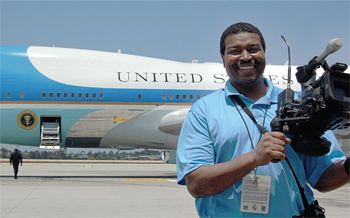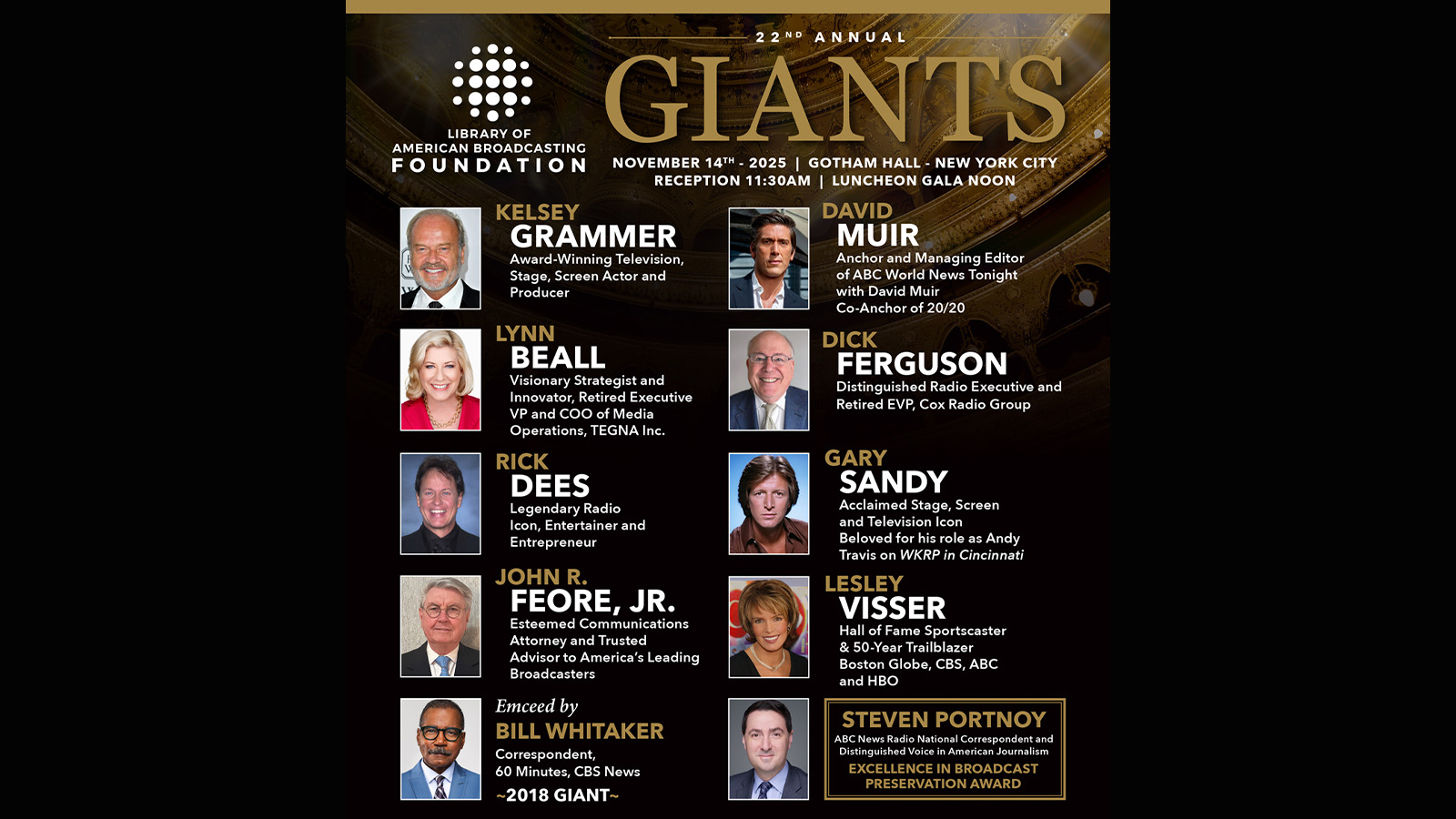Witness to History
LOS ANGELES
In 2006, when Los Angeles-based filmmaker Keith O’Derek attended a presentation by Harvard law professor Dr. Charles Ogletree, the former had no idea that it would be the beginning of an ambitious two-year documentary project. But “Barack Obama: Road to the White House” started with Ogletree’s speculation that his former student, Obama, could become the first African-American president. O’Derek was dubious at first, but it was enough to get the filmmaker to make a point of seeing the junior senator from Illinois speak in person not long afterward at an appearance in the Los Angeles area.
Obama’s entrance into the Democratic primary was still a long way off, but O’Derek was sufficiently impressed, and reconsidered Ogletree’s prediction. “I told my friends,” O’Derek recalls, “this guy could be it. He really could become president.”
Friends were skeptical: “They said, ‘Are you crazy?’ But seeing Obama in person convinced me it was possible, and I decided to make a film about him.”
VIDEO VETERAN
O’Derek has worked as a director, producer and videographer in the L.A. area for more than 25 years, often shooting for NBC and Fox Sports. During that time, he also produced and shot Straight from the Streets, a local Fox affiliate series that looked at the local cultural scene from diverse perspectives—later creating a feature-length doc of the same name.

L.A.-based filmmaker Keith O’Derek spent years documenting Barack Obama’s historical race for the White House. In his off hours, O’Derek shot footage of Obama every time he made an appearance in the L.A. area. “I just wanted to get as much footage as I could,” he says. “Before Obama declared his candidacy and then afterward, I would go and shoot. I know how to get credentials and cover news events; that’s what I do. So when things started heating up, I was always there with a camera.”
He made use of the small, portable Canon GL1 Mini DV camera and a wide-angle lens from Century Optics, as well as a Panasonic AG-HVX200, which captures HD video to P2 cards. Though he preferred the image quality of the Panasonic camera, he continued to use the significantly smaller Canon unit for shooting situations in which a less-obtrusive profile was an advantage.
When he first got the HVX200, O’Derek notes, he had to get used to some P2-specific issues. “I started out with a 4GB card, but I eventually realized I’d need a 16GB card to be able to shoot the way I was used to,” he recalls. “I thought I could just pop the new card in. I didn’t realize I’d have to upgrade my camera to use the card. I had a big interview coming up with a professor from Occidental College, where Obama went to school. It was hard to schedule the time and I couldn’t make the camera work. I went to Samy’s Camera and it took them a while to fix the problem. They got it to work in time, but the whole thing was a bigger deal than I’d expected.”
The filmmaker is quick to point out that once the P2 card issue was settled, he was very pleased with the images he got from Panasonic’s system. “It’s fast [to ingest into an editing system] because it’s a file transfer,” he says, “and the quality is beyond comparison to anything I’ve seen from tape-based cameras in its class. But I still worry about the long term. I’ve been archiving my work on all kinds of tape in various formats for years. But here, everything’s on a drive, and if the drive goes bad, what are you going to do? I know it’s important to have redundancy, and you could transfer everything to tape, but those are things I’m worried about.”
A LITTLE LIGHT ON THE SUBJECT
As interest in Obama began to grow, O’Derek wanted to make sure that his presence at speeches, dinners and sometimes rather small and private events was completely unobtrusive. Here he found Litepanels LED units worked perfectly to add some illumination or soften shadows on peoples’ faces without drawing too much attention to the fact that he was shooting.
The Litepanels units “were very helpful,” O’Derek says. “Even the very small one—the LP Micro that just goes on top of the camera—could give me enough light to shoot without blowing people out. You know, if you’re at a dinner or the pre-inauguration delegate ball, you don’t want to intrude. It’s not good if you’re there spraying the place with light. Politicians are there having a good time and don’t want someone throwing a big, bright light on them.”
As the Obama campaign took off, O’Derek began assembling and editing what would eventually become the documentary he’s recently completed. He worked with editor Shoaky Tarman using a MacBook Pro 17” laptop computer and a 1.5TB MyBook external FireWire drive, backed up to another 1TB FireWire MyBook drive. Footage was transcoded to Apple’s ProRes 422 format and then edited in Final Cut Pro. Tarman used Adobe After Effects to create some graphics that help transition between new footage and some of the archival footage O’Derek used for the project: “There’s a whole history of the Civil Rights Movement that came before Obama, and it’s important to bring that into this story. Obama didn’t just fall from the moon and become president.”
Although the majority of O’Derek’s footage of the candidate is from appearances he made in and around Los Angeles, after Obama won the 2008 election, O’Derek wanted to capture as much of the January 2009 presidential inauguration as possible while putting the event into a cultural context. His plan was to cross the country, interviewing and shooting along the way. “I didn’t want to just fly into Washington, D.C.,” O’Derek says. “I wanted to document the trip and stop off at different parts of the country to see and hear what people were thinking and get a taste of everything that was going on. I told my friend Alonzo that I was going to the inauguration and asked if he wanted to drive to Washington, D.C., with me. He said, ‘Sure.’ So we got in my Escalade and started driving to D.C. All along the way, we’d stop in various places, like the parking lot at a local Wal-Mart, just to document the people. That’s what I do. And, of course, I’d make sure to get insert shots of road signs and other landmarks so I could show the audience where we were at a particular point. We did that for three days.”
O’Derek and Alonzo arrived in D.C. just as the streets were being shut down for the inauguration the next day. Preparing for the big event, he grabbed his GL1, a tripod he could use to reach out over the crowd, and plenty of tape. “I also brought scarves to wrap my batteries in,” he adds. “It was about 17 degrees F, and, at that temperature, your batteries can easily freeze or just die.”
Now that O’Derek and Tarman have managed to shape the resulting 60-plus hours of material into a feature-length doc, O’Derek is able to focus on getting “Road to the White House” seen in festivals and distributed. “People ask me, ‘What would you have done if it didn’t work out and Obama hadn’t made it to the White House?’” O’Derek muses. “And I tell them, ‘Well, then I’d just have a bunch of footage sitting around.’ If you’re going to do something like a feature documentary, you have to be totally committed to the project and not worry about the ‘what-ifs.’”
Get the TV Tech Newsletter
The professional video industry's #1 source for news, trends and product and tech information. Sign up below.
